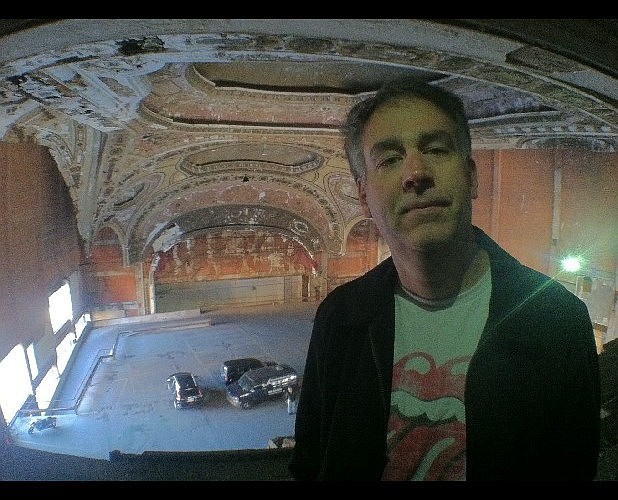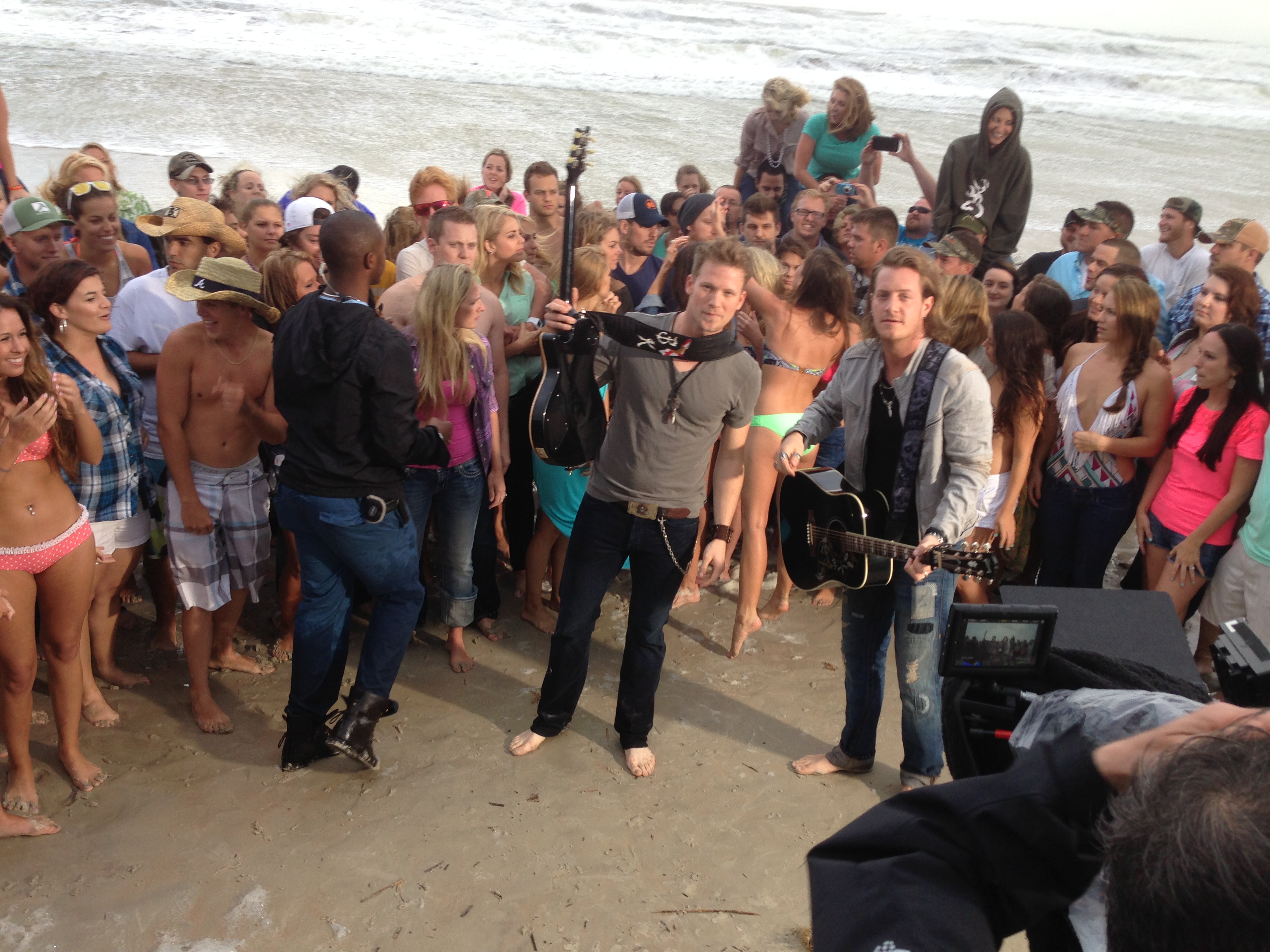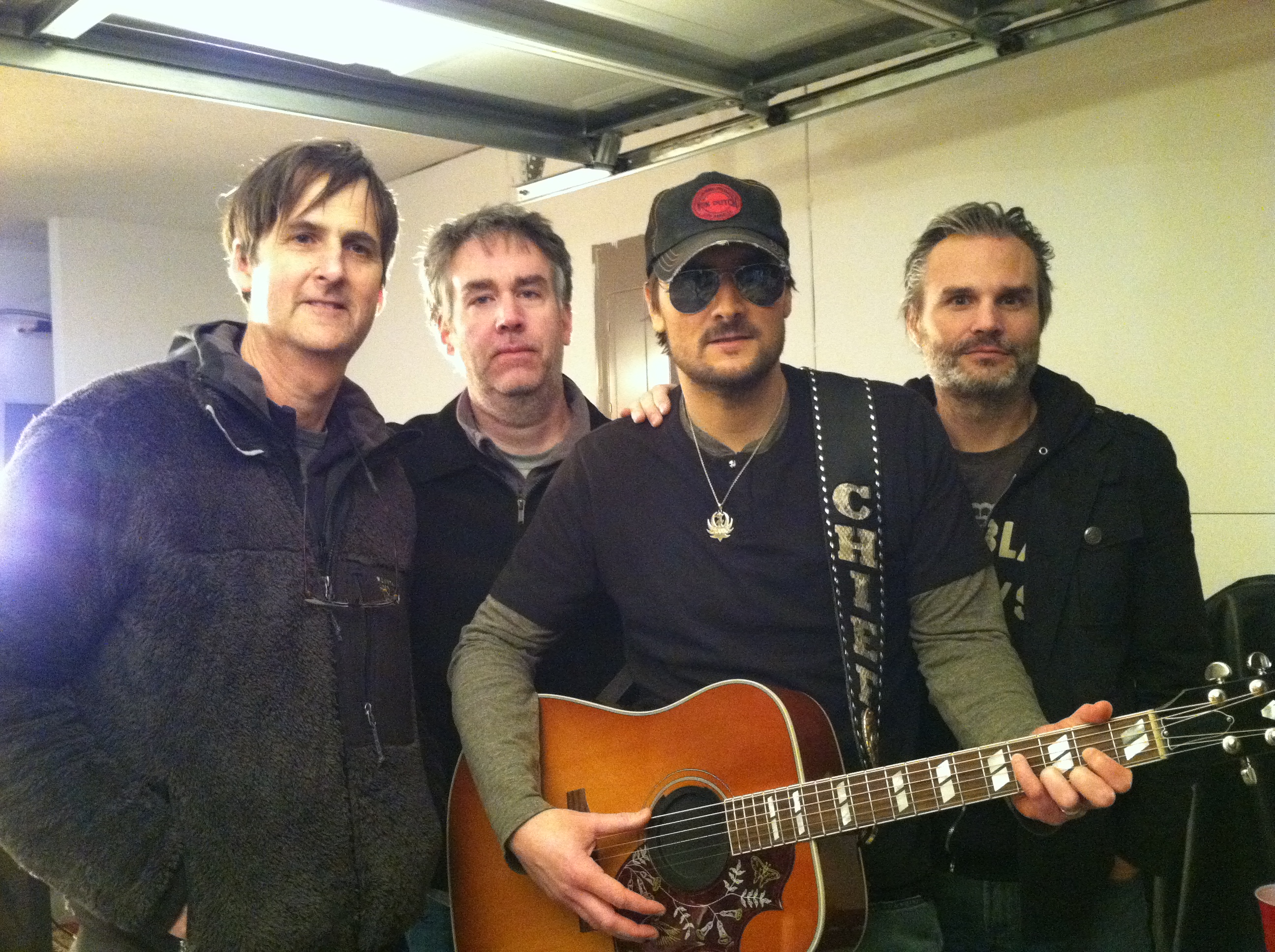Roger VaughnHere are some of the projects that Roger Vaughn has worked on. Unless otherwise noted, he is concept creator/writer on them.• Florida Georgia Line "Round Here" (music video)https://www.youtube.com/watch?v=p1oL37ycONQ• Winner: Country Music Television Duo Video of the Year (2014).• Eric Church "Springsteen" (music video)https://www.youtube.com/watch?v=l2gGXlW6wSY• Nominee: CMA Video of the Year (2012), CMT Video of the Year (2013).• Eric Church "Mixtape" (short film)https://vimeo.com/49977938• Screenwriter and co-producer for this short film based on "Springsteen" and aired as a special commercial-free event on CMT.• Eric Church "Creepin'" (music video)https://www.youtube.com/watch?v=8OZhw-aQTP8• Nominee: Academy of Country Music Video of the Year (2013), CMT Male Video of the Year (2013). Shot in Chattanooga at the Tennessee Valley Railroad Museum.• Eric Church "San Destino Rising" (web series)http://www.sandestinorising.comScreenwriter for this episodic short film series based on "The Outsiders" album.• Thomas Rhett "Beer with Jesus" (music video)https://www.youtube.com/watch?v=dphMriny1Js• Sara Watkins (of Nickel Creek) "When It Pleases You" (music video)https://www.youtube.com/watch?v=ng1AiZlAqR4• Josh Turner "Find Me a Baby" (music video)https://www.youtube.com/watch?v=NtOOB_IB-zQ
Back in the salad days of music videos, record labels were willing to spend seemingly unlimited amounts of money to create iconic pieces. The video for "Scream," by Janet and Michael Jackson, for example, cost about $7 million.
Fans gathered around their TV sets to watch networks like MTV, which actually lived up to its "music television" moniker then, and Country Music Television and The Nashville Network to discover new artists such as a-ha and Culture Club and Garth Brooks.
These days, music fans go to sources like YouTube to watch videos from acts they already know and like, says Chandra Lalume-Pereira, partner and vice president at Taillight, a Nashville-based production company.
"Now we've moved to a completely on-demand format and seeing everything on a 12-inch screen," she says. "Back then it was a fool's paradise because we had money to throw at problems."
Today, labels and the folks who actually make the videos work with a severe eye on the budget, she says. While videos are still an important part of the industry, the budgets are substantially smaller because the avenues for making money from them are fewer.
Roger Vaughn, partner and creative director at The Johnson Group, an advertising/marketing company in Chattanooga, has worked as a concept creator or writer on videos for Eric Church, Florida Georgia Line, Sara Watkins and Thomas Rhett. When creating an idea for a new video, he says, budget is always a big part of the decision making.
When coming up with the concept for a video, he must consider the number of days it will take, the number of locations, the size of the crew and the cost of special effects and post-production. Because he does similar work in his "day job," producing commercials instead of videos, he understands the process.
"I kind of know inherently what will work and what won't," he says.
Lalume-Pereira says the budget numbers for videos have dropped substantially.
"Back when I started [19 years ago], it was very idealistic," she says. "For a brand-new artist, the budget would start on average at $75,000. For established artist, it would start at $100,000. Now it's $75,000 for the established artist and a brand-new artist at, I'll say a generic label, is spending $35,000."
She won't even take a job with a budget of $25,000 or less. "It doesn't make sense to run that through a production company. There is a threshold."
Vaughn says it would be hard to make a video like 1986's "Sledgehammer" from Peter Gabriel, for example, with its multiple edits, stop-action, claymation and special effects because of the expense of editing and production. The "Sledgehammer" video won nine MTV Video Music Awards in 1987, the most ever won by a single video. MTV has said it's also the most-played video in its history.
These days, when making a video, the real trick is to be creative on a budget and avoid going the easy route with literal or clichéd videos that too closely follow a song's lyrics, he says.
"We call it 'Say a truck, show a truck,'" Vaughn says.
He adds that Eric Church, whom he has worked with on several occasions, including the making of the "Creepin'" video which was shot in Chattanooga at the Tennessee Valley Railroad Museum, is one artist who has the money, clout and desire to go big on his videos. One Church project was a 30-minute short film based on his "Springsteen" video.
"He likes to do things differently. He said 'Let's do something big.' He is definitely not a 'say-a-truck, show-a-truck' guy," says Vaughn, who also is working on Church's web series of videos called "San Destino Rising."
Vaughn says he has written and submitted about 30 treatments for music videos and actually worked on eight. He doesn't know if the other 22 were passed on because the idea was too expensive.
"You don't know you've been rejected until you see somebody else's video for the song on TV or whatever, and you never find out why you weren't selected," he shrugs.
Labels also are pickier about which songs get a video. In some cases, they will send a single to radio and see how it charts. A few years ago, fans started uploading songs onto YouTube with homemade "videos," usually over a single image or several. These became so popular, labels started making their own "lyric videos" for just-released songs, although these are often replaced later with official videos.
But videos - however they're made - are still integral parts of selling an artist, Lalume-Pereira says, and it's getting better.
"Having seen video in the fat days and in the leanest days, it is sitting very healthy right now. It's not doom and gloom. There are labels coming around as the economy is coming around.
"Music videos are not going to go anywhere," she says. "[Video producers] get beat up on and will always be on the third floor instead of upstairs with the big wigs, but videos can make a fan like the song even more."
Contact Barry Courter at bcourter@timesfreepress.com or 423-757-6354.



